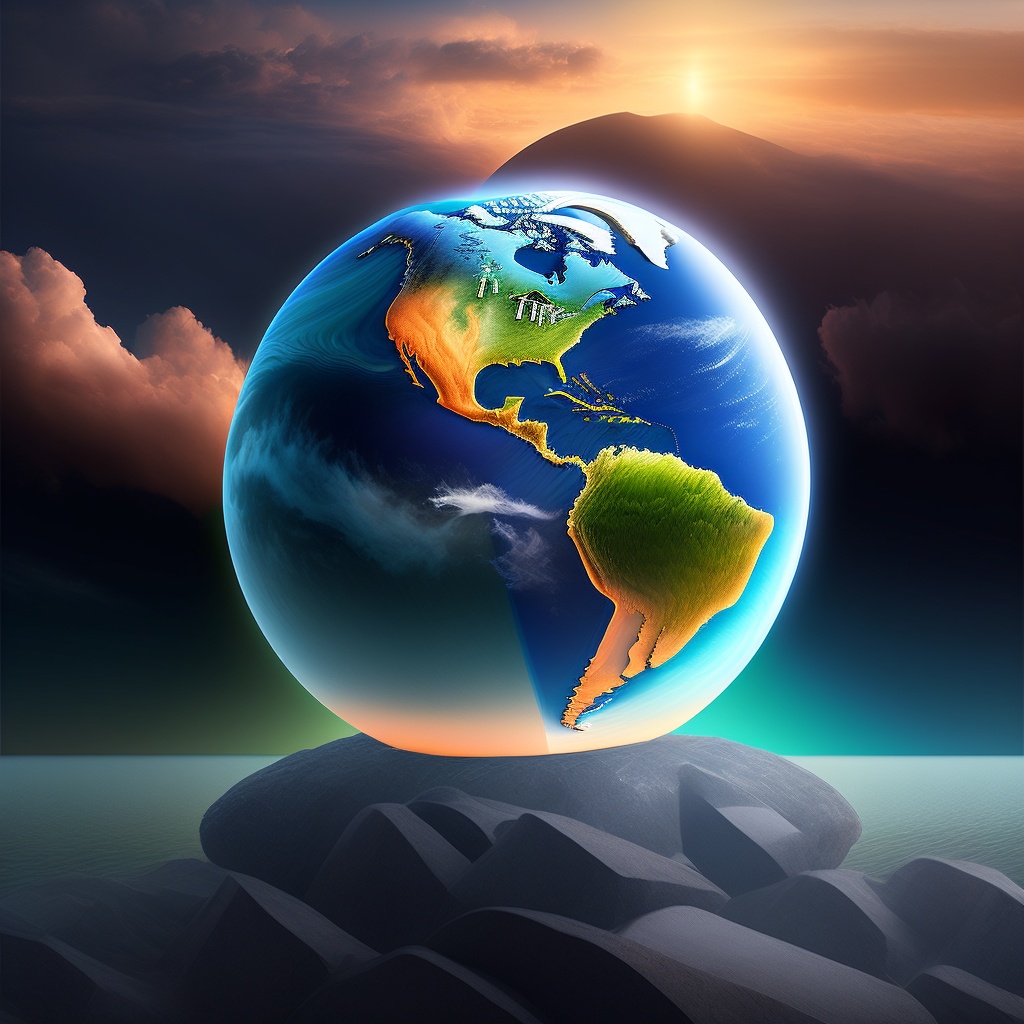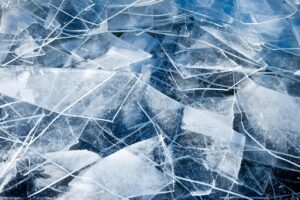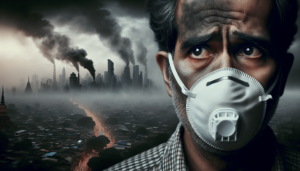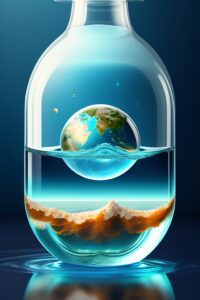Climate Change Facts for Kids: Introduction
Hey there, future Earth-savers! Ever heard the grown-ups talking about climate change and wondered what all the fuss is about? Well, buckle up, because we’re diving into the world of climate change facts for kids – and don’t worry, we’ll keep it fun!
Why Climate Change is a Big Deal
You know when you accidentally knock over a glass of juice and it spills everywhere? Climate change is kind of like that big spill, but it’s happening to our planet! It’s a big deal because it affects everything around us, from the weather to animals to the ice cream melting faster on a hot day.
The Grown-Ups Are Talking About It
You might have heard Mom, Dad, or even your teachers talking about climate change. It’s not just chit-chat over coffee; it’s something that everyone is worried about. It’s like the world’s most complicated homework, and we all have to work on it together.
Climate Change Facts for Kids: What is Climate Change?
The Earth’s Wardrobe Malfunction
Imagine if you suddenly wore a heavy coat on a hot summer day. Not very comfy, right? That’s what Earth is going through! It’s like a big, hot wardrobe malfunction. Let’s find out why.
Greenhouse Effect: Not Your Grandma’s Greenhouse!
You know greenhouses where plants grow? The Earth has its own greenhouse made of gases. But instead of growing tomatoes, it’s heating up our planet. This is called the greenhouse effect, and it’s not nearly as tasty as Grandma’s tomatoes!
The Earth’s Fever: Global Warming
Think of climate change as the Earth getting a fever. Just like when you feel hot when you’re sick, the Earth’s temperature is rising. This is called global warming, and it’s causing lots of problems. It’s like Earth needing a big ice pack!
Fossil Fuels: Earth’s Candy Bars
Have you ever eaten too much candy and felt a bit sick? The Earth feels that way with something called fossil fuels. These are things like oil and coal that we use for energy, but they’re making the Earth feel yucky. It’s like Earth is saying, “No more candy, please!”
The Oceans Are Rising: Watch Your Toes!
Imagine if your bathtub started filling up and wouldn’t stop. That’s what’s happening to the oceans because of melting ice. It’s like a bath that never ends, and it’s causing problems for people and animals who live near the water.
By exploring these complex topics in a fun and engaging way, kids can understand the importance of climate change and the role they can play in addressing it. These analogies and humorous comparisons aim to make the subject more relatable and less intimidating. Now, who’s ready to save the world? High-fives all around!
Why Should Kids Care?
Climate change isn’t just something for grown-ups to worry about. It’s like a big puzzle, and every piece matters, including yours! Here’s why you should care, too:
-
Immediate Impact: Climate change is already affecting the weather, natural habitats, and even food. You might notice changes in your daily life, like hotter summers or more frequent storms.
-
Your Future: The Earth you’ll inherit will be shaped by decisions made today. If we don’t take care of it, you could face much bigger challenges when you’re older.
-
Animal Friends: Many of the animals you love are facing difficulties due to climate change. From polar bears losing their icy homes to birds changing their migration patterns, our animal friends need us.
-
Community Involvement: Being aware and taking small actions can inspire others to do the same. Your small efforts can create big ripples.
Climate Change and Animals
Ever wonder why your favorite polar bear cartoon character might need a new home? Climate change affects animals too! It’s like a bad houseguest who never leaves.
-
Loss of Habitats: Animals like polar bears, penguins, and sea turtles are losing their homes due to melting ice and rising sea levels.
-
Food Scarcity: Some animals are finding it harder to find food. Warmer waters mean less fish for bears and birds to eat.
-
Migration: Warmer temperatures can change where animals live and migrate. This can affect the balance of entire ecosystems.
Climate Change and the Ice Cream Crisis
Hold onto your ice cream cones! Climate change is making our world warmer, and that means ice cream melts faster. It’s like a sneaky villain stealing our favorite treat!
-
Warmer Summers: Hotter temperatures mean your ice cream will melt more quickly, ruining your dessert plans.
-
Dairy Production: Climate change can make it harder for cows to produce milk, an essential ingredient in ice cream.
-
Cost: Changes in weather patterns can affect crops like sugar and vanilla, making ice cream more expensive.
Climate Change and Weather
You know those days when you can’t decide if you need an umbrella or sunglasses? Climate change messes with our weather. It’s like Earth playing a confusing game of dress-up.
-
Unpredictable Weather: Extreme weather events, like hurricanes and heatwaves, become more frequent and severe.
-
Seasonal Confusion: You might notice that winters are warmer and summers are hotter, confusing plants and animals.
-
Dressing Dilemma: The changing weather patterns mean you’ll need to be prepared for anything, from sudden downpours to unexpected sunny days.
Climate Change and Food
Love pizza? Me too! But climate change can even affect our yummy foods. It’s like a sneaky thief stealing toppings from our favorite meal.
-
Crop Failure: Warmer temperatures and erratic weather can damage crops, making ingredients for pizza, like tomatoes and wheat, scarce and expensive.
-
Food Miles: Climate change can make it harder to grow food in certain places, increasing the distance your food travels and the carbon footprint.
-
Nutrition: Rising CO2 levels can lower the nutritional quality of crops, meaning less tasty and healthy food.
Climate Change and Your Future
Climate change isn’t just about today; it’s like a movie with many sequels. What happens now will affect your future, too. It’s your story, so make sure it has a happy ending!
-
Job Prospects: Climate change could affect industries like farming, tourism, and fishing, limiting your future career choices.
-
Quality of Life: Imagine cities with more pollution, fewer green spaces, and less fresh water. That could be the world you inherit.
-
Social Challenges: Climate change can exacerbate poverty, inequality, and conflict, making it harder for communities to live in harmony.
Climate Change Facts for Kids: What Can Kids Do About It?
You might be small, but you’re mighty! Here’s how you can be a superhero and help save the world from climate change.
Reduce, Reuse, Recycle: The Three R’s of Being Awesome
Want to be a planet-saving ninja? Follow the three R’s! It’s as easy as sorting your trash and being a recycling superhero.
-
Reduce: Use less plastic by carrying reusable bags, bottles, and lunch containers.
-
Reuse: Rather than throwing things away, find new uses for them or donate to charity.
-
Recycle: Make sure to separate recyclable items like paper, plastic, and aluminum.
Plant a Tree, Be the Change
Planting a tree is like giving Earth a high-five. You can help the planet by planting one in your backyard or at your school.
-
Carbon Absorption: Trees absorb carbon dioxide and produce oxygen, cleaning the air we breathe.
-
Wildlife Home: Trees also provide homes for animals and insects, making them crucial for local ecosystems.
Speak Up: Your Voice Matters
Believe it or not, your ideas can change the world! Talk to grown-ups about climate change. It’s like being the captain of Team Earth.
-
Family: Share your knowledge and concerns with your family and urge them to make eco-friendly choices.
-
School: Suggest eco-friendly initiatives, like starting a recycling program.
-
Community: Attend local meetings and join environmental organizations.
Use Energy Wisely: Be an Energy Detective
You can be like a detective, looking for ways to save energy at home. Turn off lights, unplug chargers, and solve the mystery of how to keep the Earth cool!
-
Electricity: Turn off lights and gadgets when not in use.
-
Water: Take shorter showers and fix leaky faucets.
-
Heating/Cooling: Use energy-efficient ways to heat or cool your home.
Eat Smart: Food Choices Matter
Did you know that what you eat can help the planet? Choosing local and seasonal foods is like giving the Earth a big hug. It’s a delicious way to be a friend to the planet!
-
Local Produce: Buy from local farmers to reduce the carbon footprint associated with food transport.
-
Less Meat: Consider eating less meat; livestock farming is a major contributor to greenhouse gas emissions.
-
Seasonal Foods: Eating foods in season is more eco-friendly and they’re usually fresher and tastier, too!
Get Moving: Walk, Bike, and Skip
Cars and buses make pollution, but walking and biking don’t! You can help by choosing to walk or bike. It’s like dancing your way to a cleaner world!
-
Less Pollution: Every step or pedal you take instead of using a car reduces your carbon footprint.
-
Health Benefits: Walking and biking are great for your health, giving you exercise as you help the planet.
-
Community: It’s also a great way to get to know your neighborhood better!
By caring and taking action, you can make a huge difference in the fight against climate change. You don’t have to be a grown-up or a scientist. You just have to be you, and that’s pretty awesome! Now go out there and show the world how cool and powerful kids can be!
Climate Change Heroes
Not all heroes wear capes (although they can if they want to!). In the fight against climate change, a variety of individuals have made significant contributions through activism, research, and innovation. Meet some of the heroes who are making the world a cooler place.
Famous Environmentalists
Greta Thunberg
You might have heard of Greta Thunberg, a young Swedish activist who rose to prominence with her dedication to combating climate change. Starting with a solo protest outside the Swedish Parliament when she was just 15, her “Fridays for Future” movement has mobilized millions of young people globally to demand action on climate change.
-
Claim to Fame: Greta Thunberg’s Fridays for Future movement has become a global phenomenon, inspiring students from all corners of the globe to engage in climate strikes and demand more responsible behavior from adults in power.
-
Influence: She has addressed the United Nations and met with various world leaders. Her impassioned speeches have ignited a sense of urgency among policymakers and the general public alike.
-
Publications: She has also published a book, “No One Is Too Small to Make a Difference,” a collection of her speeches.
Jane Goodall
Jane Goodall, a British primatologist and anthropologist, became famous for her long-term study of wild chimpanzees in Tanzania. Her work revolutionized our understanding of primates and highlighted the cognitive capabilities of animals, suggesting they aren’t as different from humans as once thought.
-
Claim to Fame: Jane Goodall’s ground-breaking research in Gombe Stream National Park fundamentally changed scientific thinking about the relationship between humans and other animals.
-
Influence: Through the Jane Goodall Institute, she focuses on conservation and animal welfare issues. She travels the world spreading her message of hope and has won numerous awards for her work, including the Kyoto Prize.
-
Legacy: Her educational programs, like Roots & Shoots, empower young people to become environmental stewards.
David Attenborough
Sir David Attenborough, a British broadcaster and natural historian, has been making documentaries about the natural world for over six decades. His work has captured the imaginations of millions and made complex ecological issues relatable to the general public.
-
Claim to Fame: David Attenborough’s long-standing career in wildlife documentaries, including the iconic “Planet Earth” series, has made him a household name.
-
Influence: His documentaries have drawn attention to the threats facing biodiversity, including climate change, making complicated scientific concepts accessible to the average person.
-
Awards: He’s won multiple awards, including BAFTAs and Emmys, and has even had several species named after him!
Wangari Maathai
Wangari Maathai was a Kenyan environmentalist who founded the Green Belt Movement, an environmental organization focused on tree planting, conservation, and women’s rights.
-
Claim to Fame: She was the first African woman to win the Nobel Peace Prize in 2004, cited for her “contribution to sustainable development, democracy, and peace.
-
Legacy: The Green Belt Movement she started has planted over 51 million trees and trained over 30,000 women in trades, helping them earn an income and improve the local environment.
-
Influence: Wangari Maathai has inspired many African women to participate in social and political issues.
Bill McKibben
Bill McKibben is an American environmentalist, journalist, and author who founded 350.org, an international climate campaign aimed at lowering carbon dioxide levels in the atmosphere to a safe 350 parts per million.
-
Claim to Fame: His book, “The End of Nature,” was among the first books to introduce the general public to the concept of climate change.
-
Influence: Through 350.org, he has organized global days of action that involve thousands of events in over 180 countries.
-
Achievements: He has received numerous awards, including the Right Livelihood Award, sometimes considered the “Alternative Nobel Prize.”
Elon Musk
You might know Elon Musk as the CEO of SpaceX and Tesla, but he also plays a significant role in promoting sustainable energy.
-
Claim to Fame: His electric car company, Tesla, has popularized electric vehicles and aims to make them more accessible to the average consumer.
-
Innovation: Tesla’s solar products and energy storage solutions seek to accelerate the world’s transition to sustainable energy.
-
Future Goals: He has also announced plans to develop technologies that directly capture carbon dioxide from the atmosphere, another step toward mitigating climate change.
Conclusion
From teenagers like Greta Thunberg to seasoned professionals like David Attenborough, these climate change heroes are proof that anyone can make a difference. Their stories are not just tales of individual triumph but evidence of what can be achieved when passion, ingenuity, and a love for our planet combined.
Whether it’s inspiring global movements or planting millions of trees, these famous environmentalists show that with passion and determination, you can make a lasting impact on the world. They’re not just characters in a story; they’re real people making real change. And remember, you don’t need superpowers to make a difference; you just need to care. Who knows, maybe one day you’ll join them on this list of climate change heroes!
Fun Climate Change Experiments for Kids
Ready to become a climate scientist? Get your lab coat and goggles, and try some awesome experiments at home.
The Mini Greenhouse Effect
Ever wonder how the greenhouse effect works? You can create a mini greenhouse right at home! You’ll need two clear plastic containers, soil, seeds, and sunlight.
- Plant the seeds in both containers.
- Cover one container with plastic wrap (this is your greenhouse) and leave the other uncovered.
- Place both containers in the sun and water them regularly.
- Observe how the plants grow in both containers.
The covered container acts like Earth’s atmosphere, trapping heat and keeping the inside warmer. It’s like a cozy blanket for plants, and you’ll see how they grow differently inside the “greenhouse.”
Melting Ice Experiment
Want to see how melting ice affects sea levels? Grab some ice, water, clay, and a clear container.
- Create a little island with clay in the container.
- Fill the container with water until it almost covers the island.
- Place ice on top of the island (these are your ice caps).
- Watch as the ice melts and see what happens to the island.
As the ice melts, the water level rises, and your island gets covered! It’s like a mini version of what’s happening to coastal areas around the world.
Solar Oven Science
Cooking with the Sun
Did you know you can cook with the sun? Make a solar oven and see how sunlight can be turned into energy.
- Line a cardboard box with aluminum foil.
- Place black construction paper at the bottom of the box.
- Put the food you want to cook inside (like a marshmallow or chocolate).
- Cover the box with clear plastic wrap and place it in direct sunlight.
- Watch as the sun’s rays cook your treat!
This experiment shows how solar energy works. It’s like having a magical oven that cooks with sunlight, and it’s a tasty way to learn about renewable energy.
Trash Decomposition Observation
How Fast Does Trash Break Down?
Ever wonder what happens to trash over time? Find out by observing how different items decompose.
- Bury different types of trash (like paper, plastic, and fruit) in separate containers filled with soil.
- Mark what’s in each container and observe over time.
- Dig up the items after a week, a month, and longer to see how they change.
This experiment shows how some things break down quickly, while others take much longer. It’s like watching nature’s recycling process and seeing why we should reduce waste.
These fun and educational experiments help kids understand complex climate change concepts in a hands-on way. From seeing the greenhouse effect in action to cooking with solar energy, these experiments make learning about climate change an exciting adventure. So put on your scientist hat and start experimenting! Who knew saving the planet could be this much fun?
Conclusion
So, there you have it, young earthlings! Now you know the hot and cold of climate change, and you’re ready to make a difference. You’re cooler than a polar bear’s toenail and ready to change the world!
FAQs
Why is climate change happening? Climate change is like a big, messy puzzle. It’s happening because of things like burning fossil fuels and cutting down trees. Think of it as a game where we need to figure out how to put the puzzle pieces back together.
What are fossil fuels? Fossil fuels are like the junk food of energy. They come from ancient plants and animals and are used to power cars and factories. But just like too much candy, they can cause problems!
How do trees help the environment? Trees are like the Earth’s lungs. They take in carbon dioxide and give out oxygen. They’re big, green superheroes!
Can kids really make a difference? Absolutely! Kids are like tiny giants. You might be small, but your actions are mighty. Start small, and you can create big changes!
What are some easy ways to help? There are lots of ways! Think of it as a treasure hunt to find new ways to help. From turning off lights to using reusable bags, you’re on a quest to save the planet.
So, adventurers, are you ready to make a change? You’ve got the facts; now go forth and be awesome!




